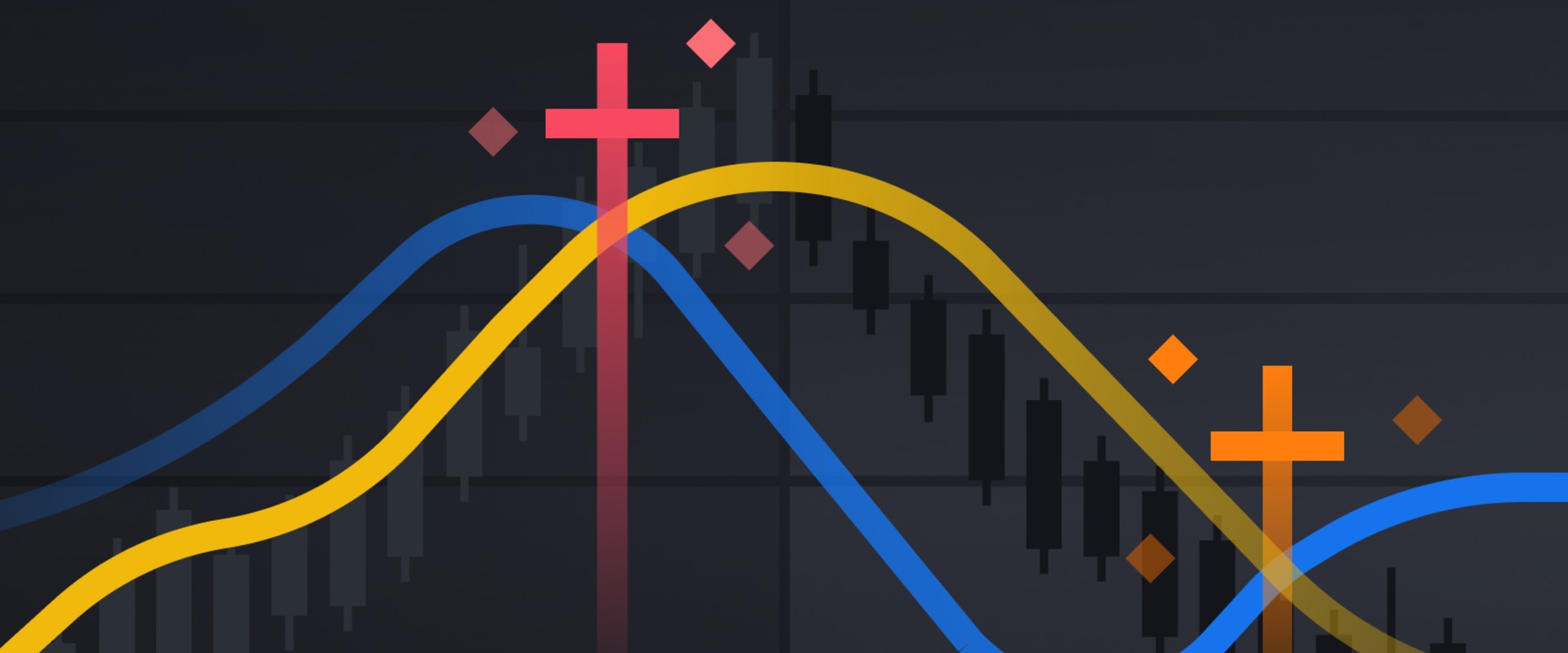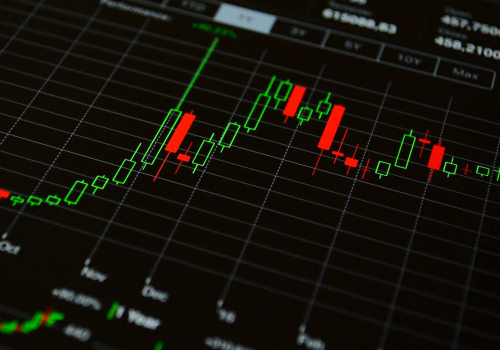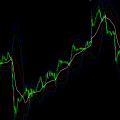Moving Average Crossover Strategy in Forex Trading
If you are a trader looking to improve your performance, then the moving average crossover strategy may be just what you're looking for. This trend-following strategy is based on the idea that when two moving averages cross each other, it can indicate a change in the underlying trend. In this article, we will provide an in-depth overview of the moving average crossover strategy, including how it works, how to use it, and what potential pitfalls to watch out for. With this comprehensive guide, you can learn more about this powerful trading tool and determine if it is right for you.
In the world of financial trading, numerous strategies are employed to identify potential market trends and make informed decisions. One such strategy is the Moving Average Crossover Strategy. This article delves into the details of this popular trading strategy, explaining its concept, implementation, and potential benefits.
What is the Moving Average Crossover Strategy?
The Moving Average Crossover Strategy is a popular technique used by traders to identify potential buy or sell signals in financial markets. It involves the comparison of two moving averages with different time periods. By analyzing the intersection or crossover of these moving averages, traders can determine potential entry or exit points for their trades.
Understanding Moving Averages
Before delving into the intricacies of the Moving Average Crossover Strategy, it's crucial to understand the concept of moving averages. Moving averages are calculated by averaging the prices of an asset over a specific time period. Two commonly used moving averages are Simple Moving Average (SMA) and Exponential Moving Average (EMA).
2.1 Simple Moving Average (SMA)
The Simple Moving Average is calculated by summing up the prices over a given time period and dividing the sum by the number of data points. It provides a smoothed line that represents the average price over a specified duration.
2.2 Exponential Moving Average (EMA)
The Exponential Moving Average gives more weight to recent prices, making it more responsive to current market conditions. It assigns exponentially decreasing weights to older prices, placing a greater emphasis on recent data points.
How Does the Moving Average Crossover Strategy Work?
The Moving Average Crossover Strategy involves the comparison of two moving averages: a shorter-term moving average and a longer-term moving average. The two key crossover signals are the Golden Cross and the Death Cross.
3.1 Golden Cross
The Golden Cross occurs when a shorter-term moving average, such as the 50-day SMA, crosses above a longer-term moving average, such as the 200-day SMA. This crossover is considered a bullish signal, indicating a potential upward trend in the market.
3.2 Death Cross
Conversely, the Death Cross happens when the shorter-term moving average crosses below the longer-term moving average. This crossover is seen as a bearish signal, suggesting a possible downward trend in the market.
Choosing the Right Timeframe
Selecting the appropriate timeframe is crucial when implementing the Moving Average Crossover Strategy. The choice of time periods for the moving averages depends on the trader's trading style and the market being traded. Shorter timeframes are suitable for day traders, while longer timeframes are more suitable for long-term investors.
Implementing the Moving Average Crossover Strategy
To implement the Moving Average Crossover Strategy, follow these steps:
Choose the relevant moving averages (e.g., 50-day SMA and 200-day SMA).
Plot the moving averages on a price chart.
Monitor the crossovers between the moving averages.
Execute trades based on the generated signals (e.g., buying when a Golden Cross occurs and selling when a Death Cross occurs).
Advantages of the Moving Average Crossover Strategy
The Moving Average Crossover Strategy offers several advantages to traders:
Simplicity: The strategy is easy to understand and implement.
Versatility: It can be applied to various financial markets and timeframes.
Trend identification: The strategy helps identify potential trends and market reversals.
Risk management: It allows traders to set stop-loss orders based on the moving averages, limiting potential losses.
Potential Limitations and Risks
While the Moving Average Crossover Strategy can be an effective tool, it also has its limitations and risks:
False signals: Crossovers may generate false signals during choppy or sideways markets.
Lagging indicators: Moving averages are based on historical data, making them lagging indicators that may not capture rapid price changes.
Whipsaws: In volatile markets, frequent crossovers may lead to whipsaws, resulting in multiple false signals.
Tips for Successful Implementation
To increase the effectiveness of the Moving Average Crossover Strategy, consider the following tips:
Combine moving averages with other technical indicators to confirm signals.
Backtest the strategy on historical data to assess its performance.
Implement proper risk management techniques, such as setting stop-loss orders.
Regularly review and adjust the strategy to adapt to changing market conditions.
Monitoring and Adjusting the Strategy
It is essential to continuously monitor the Moving Average Crossover Strategy and make adjustments as needed. Market conditions, volatility, and asset behavior can change, requiring modifications to the strategy's parameters.
Combining Moving Averages with Other Indicators
Traders often combine moving averages with other technical indicators to increase the accuracy of their trading signals. Popular indicators include the Relative Strength Index (RSI), Moving Average Convergence Divergence (MACD), and Bollinger Bands.
Backtesting the Strategy
Backtesting the Moving Average Crossover Strategy involves applying the strategy to historical data to evaluate its performance. This process helps traders assess the strategy's profitability, risk-reward ratio, and overall effectiveness before implementing it in live trading.
Moving Average Crossover Strategy is a popular form of technical analysis used by Forex traders to identify potential trend reversals or breaks. It works by identifying when two moving averages cross over one another. The two moving averages used in the strategy are Simple Moving Averages (SMA), Exponential Moving Averages (EMA), and Weighted Moving Averages (WMA).Simple Moving Averages (SMA) are calculated by taking the average of a set of past prices over a specific period of time. The SMA is considered to be a lagging indicator, meaning that it follows the price action rather than predicting it.
Exponential Moving Averages (EMA) are similar to SMA, but they place more weight on recent prices and less weight on older prices. Weighted Moving Averages (WMA) are similar to EMA, but they place more emphasis on the current price and less emphasis on the older prices. The Moving Average Crossover strategy involves identifying when two moving averages cross over one another. When this happens, it can indicate either a potential trend reversal or break. For example, if the price has been trending up and then two moving averages cross over each other, it could indicate that the trend is reversing and heading back down.
Conversely, if the price has been trending down and two moving averages cross over each other, it could indicate that the trend is breaking and heading back up. In order to identify potential signals using a Moving Average Crossover strategy, you need to look for when two moving averages cross over one another. If the shorter-term moving average (SMA or EMA) crosses above the longer-term moving average (WMA), it could indicate that the trend is reversing and heading back down. Conversely, if the shorter-term moving average crosses below the longer-term moving average, it could indicate that the trend is breaking and heading back up. There are several advantages to using a Moving Average Crossover strategy for Forex trading. One of the main advantages is that it is relatively simple to understand and use.
As it follows the price action rather than predicting it, it can be used to identify potential trend reversals and breaks in an efficient manner. Additionally, it can be used in combination with other indicators to confirm signals. On the other hand, there are some disadvantages to using a Moving Average Crossover strategy for Forex trading. Firstly, as it follows the price action rather than predicting it, it may not always be 100% accurate. Additionally, if you are using multiple different moving averages in your strategy, you may find that some of them give conflicting signals.
Finally, since the strategy is based on past prices, there is always the risk that the price may move in an unexpected direction. To maximize profits and minimize losses when trading with a Moving Average Crossover strategy, it is important to create a system around the strategy. This should include setting clear entry and exit points, as well as stop loss orders and trailing stops. It is also important to have a good risk management plan in place so that you do not risk too much of your trading capital at any one time. In conclusion, Moving Average Crossover strategies are a popular form of technical analysis used by Forex traders. They involve identifying when two moving averages cross over one another, which can indicate a potential trend reversal or break.
This article has explained what Moving Average Crossover strategies are, how they work, and how to use them in your trading. Additionally, it has outlined the different types of Moving Averages available, how to identify potential signals using the strategy, and how to create a system around it to maximize profits and minimize losses.
Advantages & Disadvantages
Using a Moving Average Crossover strategy for Forex trading has several advantages and disadvantages that should be considered before making any decisions. The most obvious advantage of the strategy is its simplicity - it is easy to understand and implement, which makes it accessible to traders of all levels. Additionally, the strategy can be used to identify potential trend reversals or breaks, which can provide traders with an early indication of potential market movements.On the other hand, there are some drawbacks to using Moving Average Crossovers that should be taken into account. One of the main problems is that they tend to generate false signals, which can lead to unnecessary losses. Additionally, moving averages are lagging indicators, meaning that they may not provide an accurate indication of future market movements. Finally, the strategy is best suited to traders who have a good understanding of technical analysis, as it relies heavily on the interpretation of chart patterns.
In conclusion, Moving Average Crossovers can be a useful tool for Forex traders, but it is important to understand the advantages and disadvantages before incorporating it into their trading strategy. By weighing up the pros and cons, traders can decide whether this type of strategy is suitable for their individual needs.
Identifying Potential Signals
A Moving Average Crossover strategy is used to identify potential signals when two moving averages cross over one another. A crossover occurs when the price of a security crosses above or below a certain moving average.Traders use this signal to identify potential trend reversals or breaks. When two moving averages cross over one another, it indicates that the shorter-term moving average is crossing the longer-term moving average. This usually indicates that the momentum of the shorter-term moving average is stronger than the momentum of the longer-term moving average. Traders typically use two or more moving averages of different lengths in order to identify potential signals.
For example, a trader might use a 50-day and 200-day moving average. When the 50-day crosses above the 200-day, it could indicate a potential bullish trend reversal. Similarly, when the 50-day crosses below the 200-day, it could indicate a potential bearish trend reversal. In addition to identifying potential trend reversals, traders can also use crossovers to identify potential breakout trades.
For example, if the 50-day crosses above an important resistance level, it could indicate that prices are breaking out and that a long trade could be entered. Similarly, if the 50-day crosses below an important support level, it could indicate that prices are breaking down and that a short trade could be entered. It is important to note that crossovers can be false signals. It is therefore important to confirm any crossovers with other technical indicators or chart patterns before entering a trade.
Additionally, traders should always use risk management techniques such as stop losses and take profits when trading with Moving Average Crossover strategies.
Creating Your System
Creating a system around Moving Average Crossover strategies can be an effective way to maximize profits and minimize losses. The key is to identify entry and exit points, as well as when to adjust your stop-loss orders. When creating your system, it is important to consider the time frame you are trading in. A shorter-term trader may look at shorter-term moving averages, such as a 10-day or 20-day moving average, while a longer-term trader may look at longer-term averages, such as a 50-day or 100-day moving average. It is also important to consider the type of moving average you are using.Simple moving averages are more common, while exponential moving averages are more sensitive to price changes. When entering a trade, it is important to identify the point at which the two moving averages cross. This is the point at which the trend may be reversing. It is also important to set a stop-loss order, which will limit your potential losses if the trend does not hold. Additionally, you should set a target price for when you plan to exit the trade, which will help you maximize your profits. Finally, it is important to consider risk management when creating your system.
Risk management techniques such as position sizing and money management can help ensure that you do not lose more than you can afford to.
Types of Moving Averages
Moving Average Crossover strategies are a popular form of technical analysis used by Forex traders. To use these strategies effectively, it is important to understand the different types of Moving Averages that are available. Simple Moving Average (SMA) is the most basic type of Moving Average. It is calculated by taking the average of a given set of data points over a specific period of time. The calculation involves adding up all the data points in the period and then dividing it by the total number of data points. Exponential Moving Average (EMA) puts more weight on recent data points in the calculation.This type of Moving Average is more responsive to recent changes in price action and thus can provide more accurate signals as to when a trend is about to start or end. Weighted Moving Average (WMA) also puts more emphasis on recent data points, but it does so in a different way. Instead of giving equal weight to each data point, WMA assigns higher weights to the most recent data points, while older data points are given lower weights. Triangular Moving Average (TMA) takes into account both the current price action and previous price action. It is calculated by taking the average of a set of data points over a specific period of time, and then adding in an additional weighted average for the period before that. Variable Moving Average (VMA) is a type of Moving Average that adjusts its sensitivity depending on the volatility of the market. It uses a combination of multiple moving averages with different periods to try and identify trends more quickly.
In conclusion, Moving Average Crossover strategies are a popular and effective trading tool that can be used to identify potential trend reversals and breaks in the Forex market. There are a number of different types of moving averages available to traders, and combining the signals from multiple moving averages can help create a more robust system. Additionally, trading with a Moving Average Crossover strategy can provide a number of advantages, such as reduced risk and improved trading efficiency.
However, it is important to remember that there can also be some disadvantages associated with this type of strategy, such as false signals and delayed entries. By understanding how Moving Average Crossover strategies work and learning how to create an effective system around them, traders can maximize their chances of success when trading the Forex markets.
The Moving Average Crossover Strategy is a widely used technique among traders to identify potential market trends and make informed trading decisions. By analyzing the crossovers between different moving averages, traders can gain insights into potential entry and exit points in the market. However, it is crucial to understand the strategy's limitations, consider risk management techniques, and adapt the strategy to changing market conditions for successful implementation.
14.1 How long should the moving averages be?
The choice of moving average lengths depends on the trader's trading style and the market being traded. Commonly used combinations include the 50-day and 200-day moving averages for long-term trends, while shorter-term trends may use the 20-day and 50-day moving averages.
14.2 Can the Moving Average Crossover Strategy be applied to any financial market?
Yes, the Moving Average Crossover Strategy can be applied to various financial markets, including stocks, forex, commodities, and cryptocurrencies.
14.3 How often should I monitor my trades when using this strategy?
Regular monitoring is crucial when using the Moving Average Crossover Strategy. The frequency of monitoring depends on the trader's trading style and the timeframe being traded. Day traders may need to monitor their trades throughout the trading day, while long-term investors may review their positions on a weekly or monthly basis.
14.4 Are there any alternative trading strategies to consider?
Yes, there are numerous alternative trading strategies available. Some popular alternatives include trend-following strategies, breakout strategies, and mean reversion strategies. It's important to explore different strategies and find the one that aligns with your trading goals and risk tolerance.
14.5 Is the Moving Average Crossover Strategy suitable for beginners?
Yes, the Moving Average Crossover Strategy is often considered suitable for beginners due to its simplicity and ease of implementation. However, it is still important for beginners to thoroughly understand the strategy, practice on demo accounts, and gradually transition to live trading with proper risk management techniques.












Leave Reply